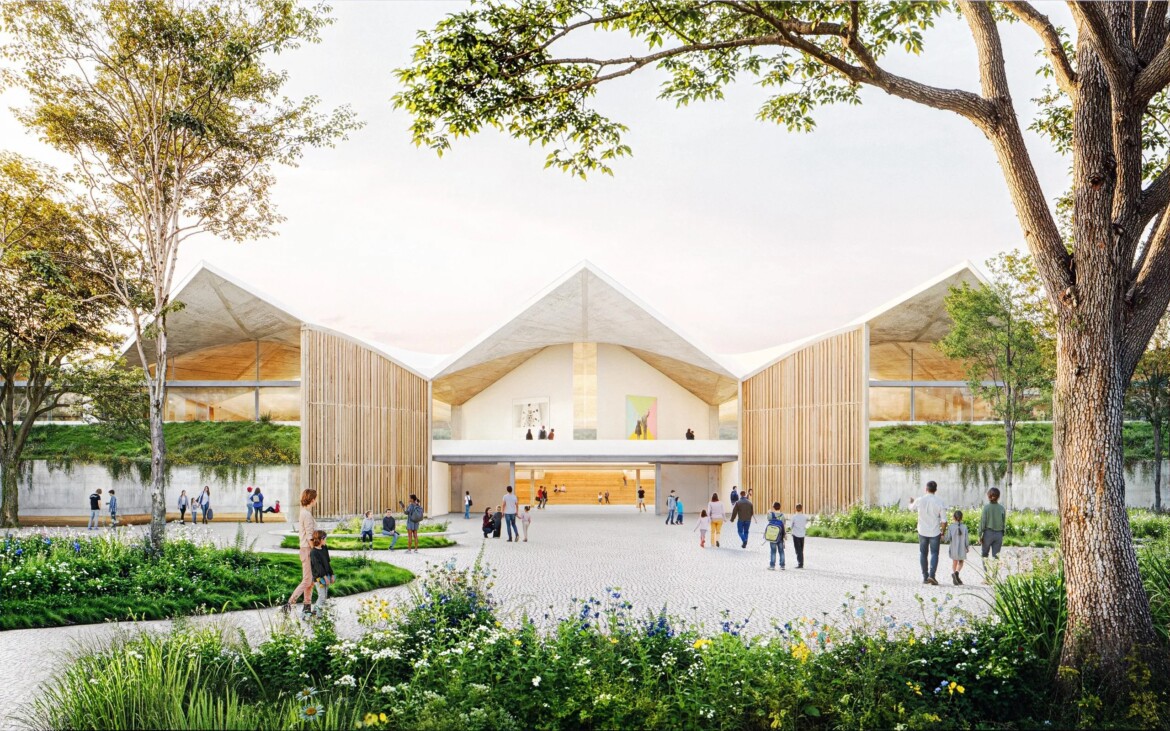THE EAMES INSTITUTE OF INFINITE CURIOSITY is moving its collection of 40,000 works by the designers Charles and Ray Eames from a warehouse in Richmond to a 166,000-square-foot site in Marin County.
There, the collection will spread out into several exhibitions and bloom as the centerpiece of a new world-class design museum. How will the curators of this mid-20th century modernist collection use it educationally to help visitors understand the very different century we are in now?
“Our chief curator is expert in and a descendant of the Eames,” said John Cary, president & CEO of the Eames Institute, referring to Llisa Demetrios, a granddaughter of Charles and Ray Eames. “We do already collect beyond just the Eames. We will likely have other curators for other types of work. Our actual staffing just remains to be seen. We literally just closed the deal.”
Last week, the institute announced it had purchased the former Birkenstock warehouse that sits west of U.S. Highway 101 between Novato and Petaluma. It is an eye-catching white spiked structure that pokes up from the golden grass like the crown of the Statue of Liberty.


The abandoned structure will be transformed by Herzog & de Meuron, the same internationally-renown architects that designed the de Young Museum in San Francisco’s Golden Gate Park. The new destination space will attract visitors from around the world and bring a needed boost to the local economies of Novato and Petaluma.
The Eames’ careers peaked during the period of prosperity that followed World War II. Suburban life boomed as returning servicemembers bought homes with low-cost mortgages under the Servicemen’s Readjustment Act, known as the G.I Bill.
Production of consumer goods rose as factories turned to meet the new demand for household appliances. Some of the Eames signature designs included uniform molded plastic stackable chairs that are still produced today. Their famous 1956 Herman Miller Eames lounge chair can sell for up to $15,000, but ripoff versions can be found at Walmart.
Cary said the Eames worked with a variety of corporate partners, including Westinghouse, IBM, Zenith and Emerson. With such financial stability, their creativity output seemed limitless, designing furniture, fabric and toys. They produced over a hundred films like the 1977 work for IBM called “Powers of Ten,” which explored perceptions of scale.
They built and occupied a steel-and-glass Los Angeles home with spaces that flowed seamlessly between indoors and outdoors. It seemed to define a modern free-thinking lifestyle.
“I have not actually thought of them as being pioneers in free thinking,” said Cary. “I think that they were mostly focused on working within constraints. They also worked extensively with the United States government through the United States Information Agency, which was kind of a joint effort of the CIA and the State Department.”
Cary said the husband-and-wife team felt a lot of political pressures, especially when the USIA called them in 1956 to work on the American National Exhibition in Moscow. It was toured by over 2.5 million Soviet citizens as well as President Richard Nixon and Soviet President Nikita Khrushchev.

USIA’s exhibition program was a tool for public diplomacy and soft power during the Cold War, according to research by Greg Castillo, professor of architecture at UC Berkeley’s College of Environmental Design.
USIA enlisted major designers and architects to produce innovative multimedia presentations that conveyed a vision of American abundance. They included recreations of suburban homes stocked with electric mixers, can openers, fryers and other devices that made the American kitchen a complete contrast to its crude Russian counterpart.
“They were with the USIA trying to kind of reposition the standing of the United States to a population that was closed off from it for a very long time,” said Cary, adding that the couple’s relatively small studio had to produce a lot of films and exhibition work on a short schedule and it had to fit a very particular agenda.
Innovation with intention
The Eames also pioneered advances in prefabrication, because there was limited material availability in the postwar environment and a need to scale and replicate. Their famous lounge chair was shipped in a box to be assembled by the buyer, like Ikea furniture is today. It helped pave the way for prefabricated building techniques.

The new campus in Marin County includes some prefabricated building elements. Originally constructed in 1964 as a distribution center for publisher McGraw Hill, there is an office building that is framed with pre-stressed concrete highway girders. It shades a portion of the parking lot that will be rebuilt into a public plaza with fountains and outdoor sculptures.
Cary described a recent email he received from a high school junior in Novato who had just returned from a summer camp at the Rhode Island School of Design in Providence.
“This person had come home to read about this new museum and said, ‘Hey, my friends and I would love to be supportive in any ways that we can.’ We’re building this as a global destination, but we are thinking of it in terms of a single child that gets off the yellow school bus and goes in there and has their mind blown and feels newly energized, empowered and inspired.”
The post With new Marin home for Eames Institute comes an expanded curatorial mission appeared first on Local News Matters.
